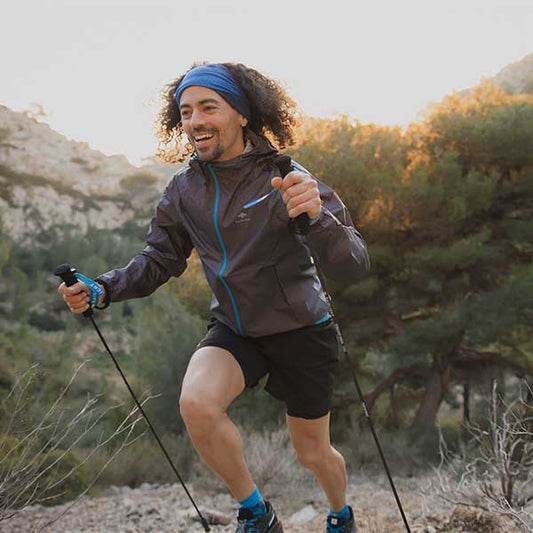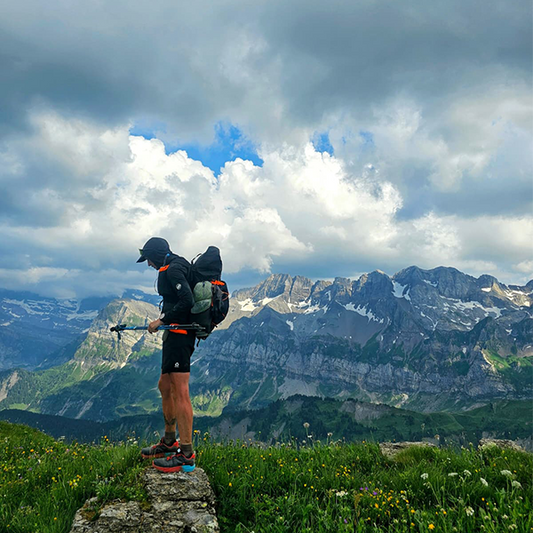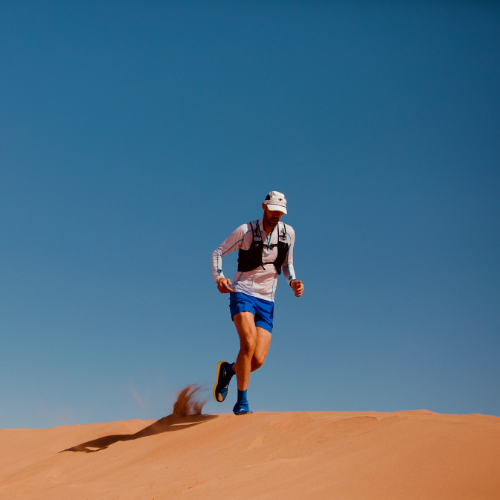Join us throughout the winter for advice on strengthening your muscles for trail running. On the programme: specific exercises, mistakes to avoid, plyometrics, mobility... We'll give you all the keys to making the most of the winter season and optimising your physical preparation for spring and summer competitions.
To give you the best possible support, we've called on our ambassador and coach specialising in physical preparation for trail athletes, Matthieu Andreux. For years, he has been helping runners, both amateur and experienced, to optimise their performance and prevent injury. With a degree in physical preparation, nutrition and rehabilitation, Matthieu is renowned for his scientific and individualised approach. His aim? To help each individual reach their full potential while maintaining good physical health.
Find Matthieu on Instagram under the name matthieu_training and on https://calendly.com/matthieu-andreux/prise-de-rendez-vous-challenger

When we think of trail running, we often think of endurance, managing gradients or the ability to run on varied terrain. However, one element that is often overlooked is muscle strengthening, which plays a central role in improving performance and reducing the risk of injury.
Trail running places intense demands on the muscles, particularly on climbs where strength is paramount, and on descents where the absorption of impact requires robust musculature. This is where muscle strengthening comes into play. Not only does it make it easier to withstand these repeated efforts, it also helps to compensate for the imbalances created by the nature of the terrain
The benefits of muscle strengthening for runners
- Improved performance: Stronger muscles, particularly in the legs, abdominal muscles and back, enable you to maintain an efficient posture when running, thereby reducing fatigue. Muscle strengthening also improves running economy, so you can run longer without depleting your energy reserves.
- Strength endurance: Over long distances, muscular fatigue can become a real brake on performance. Strengthening your muscles helps to delay this fatigue and maintain a steady pace, even at the end of a race or over long gradients.
- Reducing injuries: Muscle strengthening is one of the best strategies for preventing injuries such as ankle sprains, periostitis and lower back pain. Strengthening the ankles, abdominal muscles and lower back promotes greater stability, reducing the risk of injury on technical and uneven terrain.
- Power and explosiveness: Whether you're climbing a steep hill or descending rapidly without losing control, muscular power is essential. Targeted exercises can help you develop the explosiveness you need for both ascents and descents.
- Improving stability and coordination: Trail running involves constant changes of direction, jumping over obstacles and maintaining balance on technical terrain. Muscular strengthening, particularly of the legs and trunk, improves coordination and stability, reducing imbalances and falls.
When and how do you incorporate muscle strengthening?
Integrating strength training into a training programme must be well planned to avoid overtraining. Ideally, two sessions of 45 minutes to 1 hour per week are recommended, depending on the intensity of the races. These sessions should focus on the main muscle groups involved in trail running: quadriceps, glutes, calves, abdominals and lower back.
Here are some concrete examples of exercises to integrate, with specific videos for better understanding:
- Global warm up routine (vidéo) : A good warm-up is essential before each outing, to prepare the muscles for the effort and prevent injury.
- Ankle strenghtening (vidéo) :Working on ankle mobility and strength helps prevent frequent sprains on uneven terrain.
- Periostitis prevention(vidéo) : Strengthening the shins and calves helps prevent the painful inflammation that affects many runners.
-
Strengthening the back and abdominal muscles (vidéo) : Maintaining correct posture, especially over long distances, depends on good core stability.
How do these exercises improve trail performance?
Muscular strengthening, as a complement to running, optimises running economy. This means that each stride uses less energy, enabling you to maintain a sustained effort for longer. What's more, strengthened muscles are better able to tolerate repeated impacts, reducing muscular fatigue at the end of the race.
Runners who include these sessions generally see an improvement in their running times, particularly on uphill sections, as well as better post-race recovery. By strengthening the stabilising muscles of the trunk, ankles and legs, it becomes easier to maintain a stable posture and remain efficient, even on difficult terrain.
The importance of consistency
As with all aspects of training, the key to success lies in consistency. Consistent use of strength training, alongside long runs and speed sessions, not only improves performance, but above all prolongs the life of a runner's career by reducing the risk of injury.
It is advisable to follow a strengthening programme over several months to see concrete results. The exercises suggested can easily be adapted to each level of practice, and it's essential to follow the advice of an experienced coach, such as Matthieu Andreux, to tailor training to the specific needs of each runner.
Muscle strengthening is an essential part of trail runners' preparation. By combining strengthening sessions, endurance work and specific training, it is possible to optimise performance while minimising the risk of injury.
Incorporating these exercises into a weekly routine is an excellent way of maximising your physical capacity. Matthieu Andreux's advice and personalised programmes will help you make the most of the benefits of strength training and turn every mountain outing into a real success.
To find out more about Matthieu or to find out more about his practice, visit his website https://www.matthieu-training.fr/











